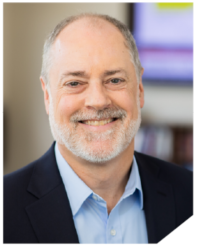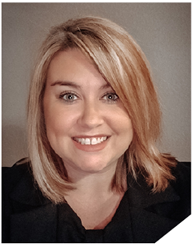

This is the eighth installment of our Tax Technology Corner. As a corporate tax professional, you know how important technology is and how it’s evolving at warp speed. With new regulatory and compliance initiatives in the federal, state, and international areas, landmark tax reform legislation, and globalization of tax monitoring and enforcement, keeping up with tax technology is not a luxury—it’s a necessity. Each installment of this column will pair a taxpayer with a service provider. Together, in Q&A format, they’ll tell a story about how they have worked together to solve a specific tax problem, implement a better solution, cut costs, or improve productivity. In this installment, Lauren Marks, administrative manager at Graybar, a leading distributor of electrical communication and data networking products, and Mike Lott, senior product manager at Vertex, Inc., a leading tax and services provider that empowers global commerce, discuss how they worked together to tackle important tax certificate exemption issues. Michael Levin-Epstein, senior editor of Tax Executive, moderated the discussion.
Michael Levin-Epstein: I’d like to begin by asking Lauren to describe the tax issue that led you to Vertex.
Lauren Marks: Graybar is a wholesale electrical distributor, so approximately sixty percent of our sales are exempt from sales tax. We have thirteen district offices across the country, and at the time, each one handled the loading of certificates and processing of our tax corrections separately. We realized that we needed to come up with a way to make this process more efficient, so it was a great opportunity for Graybar to partner with Vertex, as well as [with] Conexiom. We could validate our customers’ tax certificates online and load them through a web service call into Vertex. Graybar also worked with LCR-Dixon to issue tax-only credit and invoicing to our customers. These tools cut the number of open tax deductions in half. This initiative completely transformed Graybar’s indirect tax function. In the first six months of this implementation, we reduced tax-related working hours by 54,000 and achieved a cost savings of nearly $6 million.
Levin-Epstein: Mike, from your point of view, what made you guys confident that you could solve Lauren’s problem?
Mike Lott: For context, it’s important to point out that incorrect or missing exemption certificates is the second leading cause of audit noncompliance. If an auditor finds transactions that did not charge tax and the correct exemption documentation is not available, companies are at risk for large financial penalties. During the last recession this became a focus area for jurisdictions during audits, as they were under pressure to replace lost revenues from the poor economy. During this time we delivered the first release of the Vertex Exemption Certificate Manager (ECM) as a tool to help our clients collect and manage exemption certificates and support audits.
We developed solutions together with our clients who were feeling this pain, one of which was our [ECM] solution that would help companies be able to understand, Do they have the right certificates? Are the certificates stored in a way that can be accessed easily and available to be provided to jurisdictions upon audit? Are they in compliance so that they can ensure and feel confident that they are exempting tax correctly? ECM was built to support the process that Graybar was undertaking.
Working Relationship
Levin-Epstein: Could you describe your working relationship?
Marks: It was a great joint effort supported by our constant communication through WebEx and emails. We happened to be upgrading our system with Vertex at the time, so we also had a couple of onsite resources that we could bounce questions off of. Vertex’s capability to integrate with Conexiom was also great, because Conexiom did the online validations for us. LCR-Dixon completed a live call to Vertex to validate the certificate record prior to issuing tax credit. It was a great collaboration, and we worked through our struggles together to innovate and adapt.
Lott: I first wanted to point out that we continue to build out the functionality of our ECM solution based on collaboration with our customers to meet their needs and the larger needs of the market. In the specific case of Graybar, as Lauren mentioned, we developed a great partnership regarding exemption certificate management. Graybar had specific needs based on the size of their organization and the scope of their process. Graybar was looking to see if there were other ways that ECM could work better for them. They had ideas of how automation could help, and over a short period of time we met with the Graybar team, as well as their partners, to develop a plan to use our web services to support them. These web services are addressing a specific need for Graybar, but are also available for all of our clients to use. The collaboration and partnership we built with Graybar addressed a specific pain point for them and at the same time provided us immediate feedback on the value to the overall market. This is a win-win for both of our organizations.
Best Parts of Collaboration
Levin-Epstein: What were the best parts of working together?
Marks: The best part of working with Vertex was the collaboration we described before. With web service availability, Graybar transformed our business to load anywhere from 6,500 to 7,500 certificates per month, an amount previously unheard of. At most companies, executives encourage innovation and ideas for process improvement opportunities. One of the best things I can say about working with Vertex is when we come to them with these ideas, we make sure that they’re mutually beneficial for both companies, and we’re continuing to collaborate. When we went to the Vertex conference last October, it felt like we were a family as we cheered each other on for all the great achievements we accomplished together.
Lott: I would agree. The most satisfying part of my job is when you are able to work with customers such as Graybar. It really is a collaborative process. They’ve got ideas, we’ve got ideas, and we can bounce those ideas off of each other and say, “All right, here’s where that will work or not work for each of us.” At the end of the day, a true partnership, which I feel we have with Graybar, is about providing mutual benefits to each organization.
Levin-Epstein: Anything else you want to add?
Marks: You always want to be a leader in your industry, and we’ve achieved incredible results alongside Vertex, Conexiom, and LCR-Dixon.
Lott: Graybar is looking to the future in terms of where they want to be in their industry, and that helps us drive to where we need to be in our industry as well. It’s been a great partnership, and really positive working relationships with people like Lauren and others within their organization. Like I said before, it makes my job as a product manager easier, and it also, I think, rewards both organizations.



